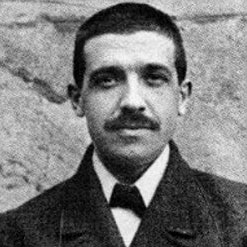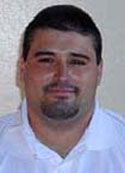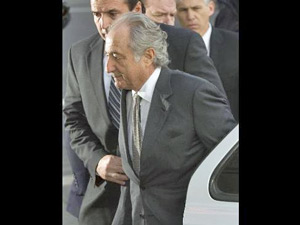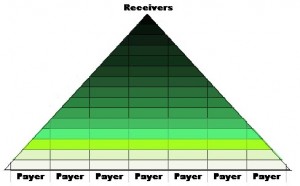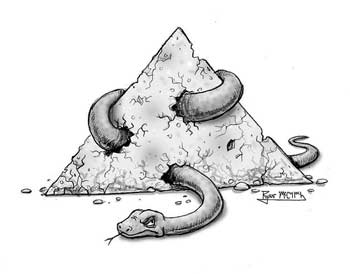
Picture from Rebecca Harshbarger
I write a lot of blogs on Ponzi schemes because I know several local people who have been bitten by such a scheme. I guess it’s kind of easy for some people to fall for a Ponzi scheme so here are some guidelines to watch out for so you don’t become a victim.
What gives Ponzi schemes such appeal to investors? Alabama Securities Commissioner Joe Borg ticks off several draws.
“For the 40- to 50-year-old crowd, there’s the fear that the Social Security umbrella won’t be there,” he says. To make enough to retire, they figure they have to turbocharge their investments — and that plays right into the hands of the Ponzi scammer. “Fear is one hell of a motivator.”
For retirees, the problem is low interest rates. The average one-year bank CD yields just 0.95%, Bankrate.com says. A $100,000 CD gives you just $142 a month in interest.
Retirees find they can’t live off the interest from their savings, and that they have to dip into their principal. “They can’t make any money, and they think they’re going to outlive their savings,” Borg says.
Ponzi scammers can use other methods to get people to invest. Madoff used affinity: He scammed the wealthy. He also used religion: Many of his investors were Jewish.
In the South, many Ponzi scammers use their church affiliations, Borg says. “When you have God on your side, what can go wrong?”
What’s particularly insidious about Ponzi schemes is that many people, particularly the elderly, have a hard time admitting they made a mistake, even when the whole scam starts to unravel.
“There’s this fear that if the kids find out, it’s going to indicate I can’t handle my own affairs,” Borg says. Sometimes, older investors would rather lose the money than lose their independence.
The recent burst of Ponzi schemes has federal and state authorities on alert.
“There’s a significant increase in Ponzi scheme cases this year,” says Scott Friestad, associate director of the SEC’s division of enforcement. “From our perspective, size isn’t important. We’re aggressively pursuing Ponzi schemes regardless of size, because the sad truth is that for those caught up in them, they’re losing most if not all of their money.”
The free-lunch warning sign
How can you keep yourself away from Ponzis? Start by investigating anyone who offers an investment scheme that seems too good to be true. (Be particularly wary of those who offer free lunches while they make their pitches.) The Financial Industry Regulatory Authority’s website, finra.org, has a broker check section so investors can type in a broker’s name or firm and see any complaints that have been lodged.
But don’t stop there. FINRA’s database reported no such problems with Bluestein. It did, however, report problems with the brokerage firms he worked for.
Other steps:
•Check the broker’s record with your state securities administrator. You can find how to contact your state securities administrator at www.nasaa.org. Ask for all materials from the Central Registration Depository (CRD) about your prospective stockbroker. For investment advisers, ask for all materials from the Investment Adviser Registration Depository (IARD).
•Check investment advisory firms with the Securities and Exchange Commission at www.sec.gov. “There’s an online complaint center,” Friestad says. “I’m confident that someone will follow up quickly.”
What victims should do
If you think you’ve been scammed, contact your state securities administrator as soon as possible. They can shut down a scammer quickly: And the sooner they act, the greater chance you have of recouping some of your money. But it’s best to avoid a scam entirely.
It’s easier said than done. Con artists will say anything to part you from your money. And they know exactly what to say: “They’re safe, they’re guaranteed, they’ll make up for everything you didn’t save for the past 30 years,” Borg says. But in the end, the Ponzi always collapses and its investors wind up with nothing.
This article was published for educational purposes.
Source USA Today
